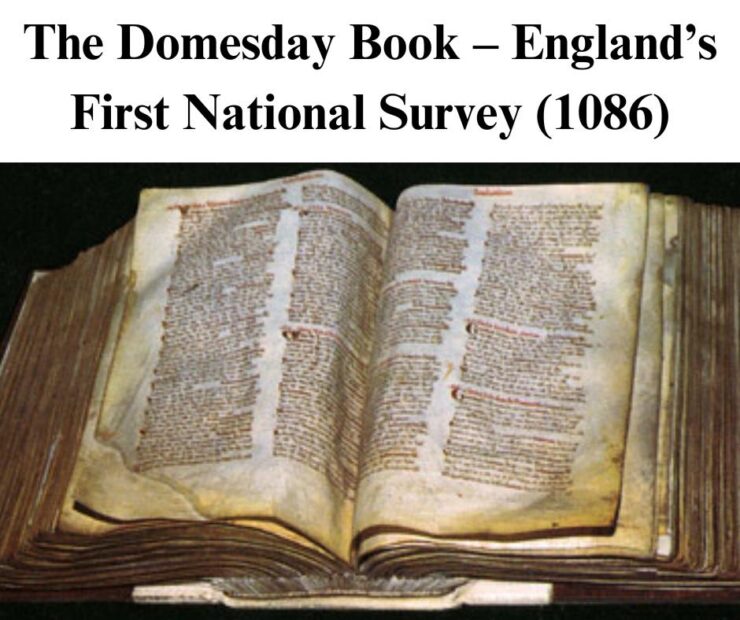
The Domesday Book – England’s First National Survey (1086)
In 1086, just 20 years after the Norman Conquest, William the Conqueror ordered one of the most remarkable administrative feats in medieval Europe:
The Domesday Book — a meticulous record of every town, village, landholding, and resource in England.
Why Was It Created?
•William wanted to know exactly what he owned — and what others owed.
•It allowed him to assess taxes, control land ownership, and ensure feudal loyalty.
•It was a tool of power, control, and efficiency — revolutionary for its time.
What Did It Contain?
•Details on more than 13,000 places across England and parts of Wales.
•Information about landowners, peasants, livestock, mills, churches, forests, and fields.
•It documented who held what before and after the Norman invasion.
Why Is It Called the Domesday Book?
•It was named after “Doomsday” because its judgements were seen as final and unchallengeable — like the Last Judgement.
Legacy:
•Still preserved today in The National Archives, the Domesday Book is one of the most valuable historical documents in Europe.
•It offers a rare glimpse into 11th-century society, law, and economy.
•It remains a symbol of Norman administrative genius and William’s iron grip on England.
The Domesday Book wasn’t just a record —
it was the foundation of royal authority and the earliest roots of British bureaucracy.
